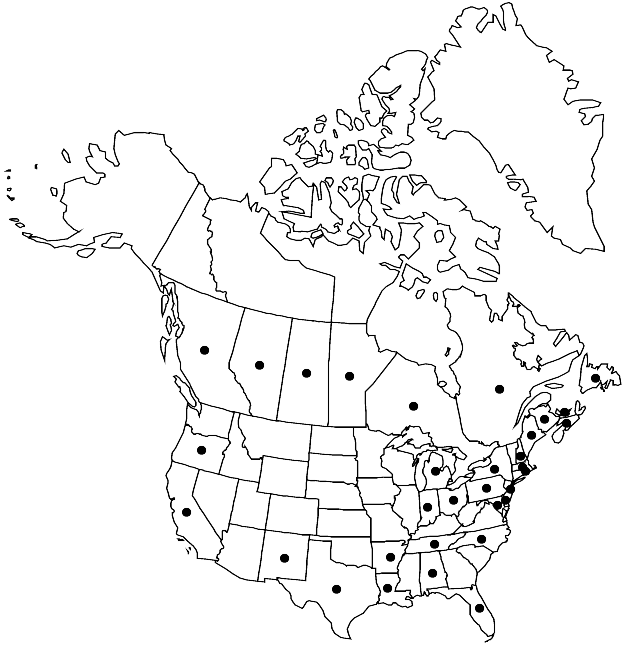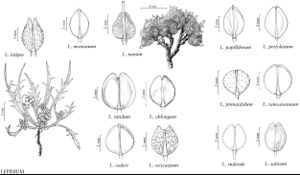Lepidium ruderale
Sp. Pl. 2: 645. 1753.
Annuals or biennials; (fetid); puberulent (trichomes cylindrical). Stems simple from base, erect ascending, branched (several) distally, (0.5–)1–3.5(–5.5) dm. Basal leaves rosulate; petiole 1–3.2(–5.3) cm; blade (1- or) 2- or 3-pinnatisect (lobes oblong), (1.5–)3–5(–7.2) cm, margins (of lobes) usually entire, rarely dentate. Cauline leaves sessile; blade linear, (0.4–)1–2(–3) cm × 0.5–2.5(–3.5) mm, base cuneate, not auriculate, margins entire. Racemes considerably elongated in fruit; rachis puberulent, trichomes straight, cylindrical. Fruiting pedicels divaricate to horizontal, straight, (terete), (1.5–)2–4(–5) × 0.1–0.15 mm, puberulent. Flowers: sepals oblong, 0.5–0.9(–1) × 0.2–0.4 mm; petals (absent or rudimentary), white, linear, 0.2–0.5 × 0.1 mm, claw absent; stamens 2, median; filaments 0.7–0.8 mm; anthers 0.1–0.2 mm. Fruits elliptic, (1.5–)1.8–2.5(–3) × 1.5–2(–2.3) mm, apically winged, apical notch 0.1–0.2 mm deep; valves thin, smooth, not veined, glabrous; style obsolete or to 0.1 mm, included in apical notch. Seeds oblong to ovate-oblong, 1–1.5 × 0.6–0.8 mm. 2n = 16, 32.
Phenology: Flowering Apr–Jul.
Habitat: Fields, pastures, waste places, roadsides, gardens
Elevation: 0-300 m
Distribution

Introduced; Alta., B.C., Man., N.B., Nfld. and Labr. (Nfld.), N.S., Ont., P.E.I., Que., Sask., Ala., Ark., Calif., Del., Fla., Ind., La., Maine, Md., Mass., Mich., N.H., N.J., N.Mex., N.Y., N.C., Ohio, Oreg., Pa., R.I., Tenn., Tex., Eurasia, introduced also in South America, Australia.
Discussion
Selected References
None.
